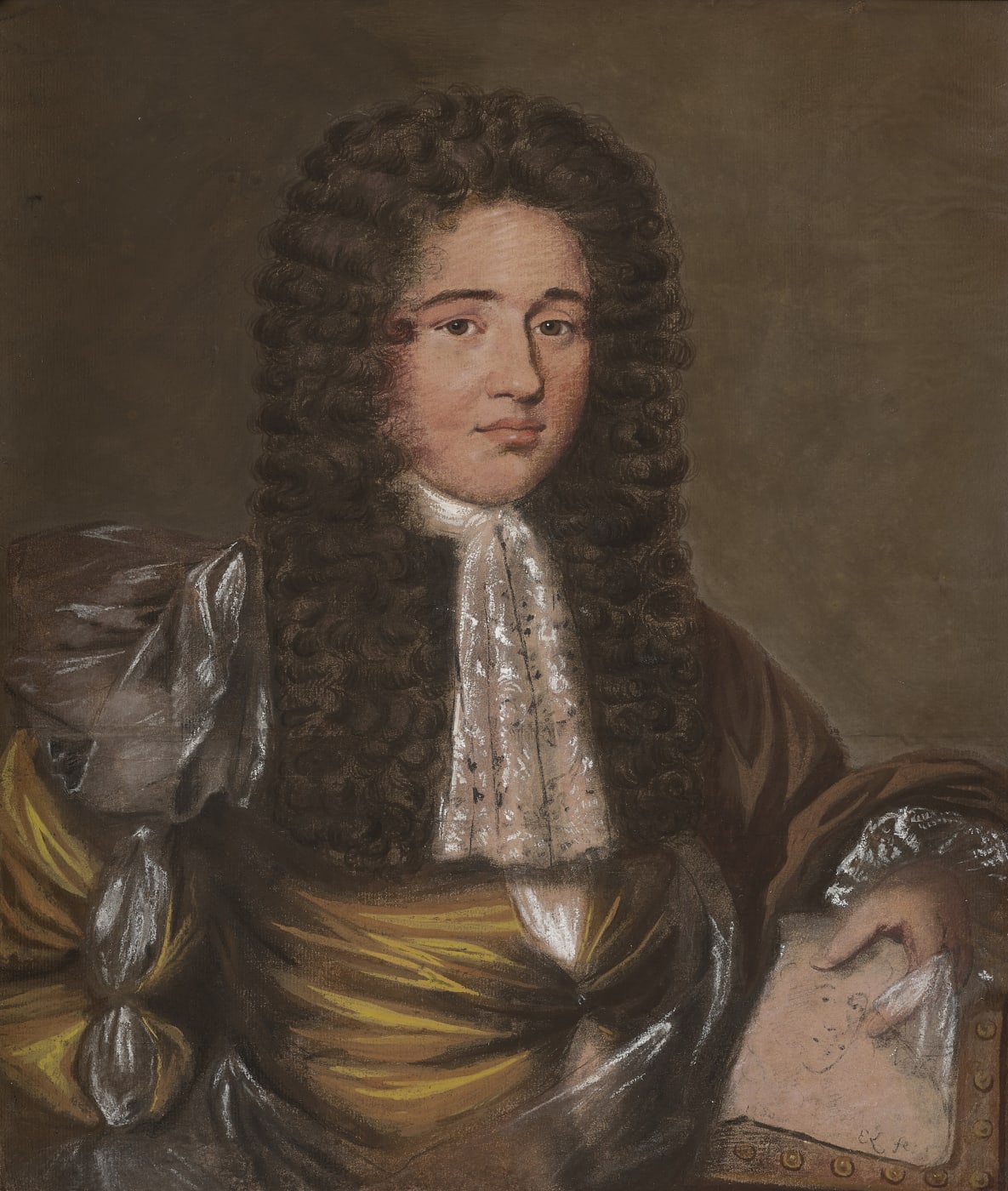Full Biography
Edward Luttrell’s first choice of career was not as an artist. Instead, he had hoped in his youth to become a lawyer, studying at the New Inn. At around this time, he also started to draw. He taught himself, according to George Vertue (1684-1756), so that soon what had begun as an out-of-hours hobby had become an obsession.
Luttrell soon dropped out of his studies at the New Inn to take lessons from the pastellist Edmund Ashfield (1640-1679). Luttrell had a great admiration for his teacher, to whom he attributed many of the most significant innovations in pastels of the age. Writing in his unpublished 1683 treatise, An Epitome of Painting, Luttrell referred to him as an artist ‘whose memory will never dye’.
Luttrell ensured that this was so. Just as Ashfield had innovated in his own day, greatly expanding the range of colours and materials used by pastellists, so Luttrell did the same. He developed Ashfield’s palette and tried his hand at techniques such as painting on glass. Most notably, he devised a method for drawing with coloured chalks directly onto copper plates, which he “roughed” with a tool so that the pigments would hold. Luttrell was also skilled in the art of mezzotint, a form of printmaking that had recently been invented.
Edward Luttrell’s first choice of career was not as an artist. Instead, he had hoped in his youth to become a lawyer, studying at the New Inn. At around this time, he also started to draw. He taught himself, according to George Vertue (1684-1756), so that soon what had begun as an out-of-hours hobby had become an obsession.
Luttrell soon dropped out of his studies at the New Inn to take lessons from the pastellist Edmund Ashfield (1640-1679). Luttrell had a great admiration for his teacher, to whom he attributed many of the most significant innovations in pastels of the age. Writing in his unpublished 1683 treatise, An Epitome of Painting, Luttrell referred to him as an artist ‘whose memory will never dye’.
Luttrell ensured that this was so. Just as Ashfield had innovated in his own day, greatly expanding the range of colours and materials used by pastellists, so Luttrell did the same. He developed Ashfield’s palette and tried his hand at techniques such as painting on glass.[4] Most notably, he devised a method for drawing with coloured chalks directly onto copper plates, which he “roughed” with a tool so that the pigments would hold. Luttrell was also skilled in the art of mezzotint, a form of printmaking that had recently been invented.
However, for reasons unknown, there is a dramatic decline in his output after 1705. In 1711, he was forced to sell 120 framed works by raffle, promising that some ticket-holders would receive fresh works executed by him from the life (they seem to have been disappointed, as only one work by Luttrell from after 1711 is known to exist).












